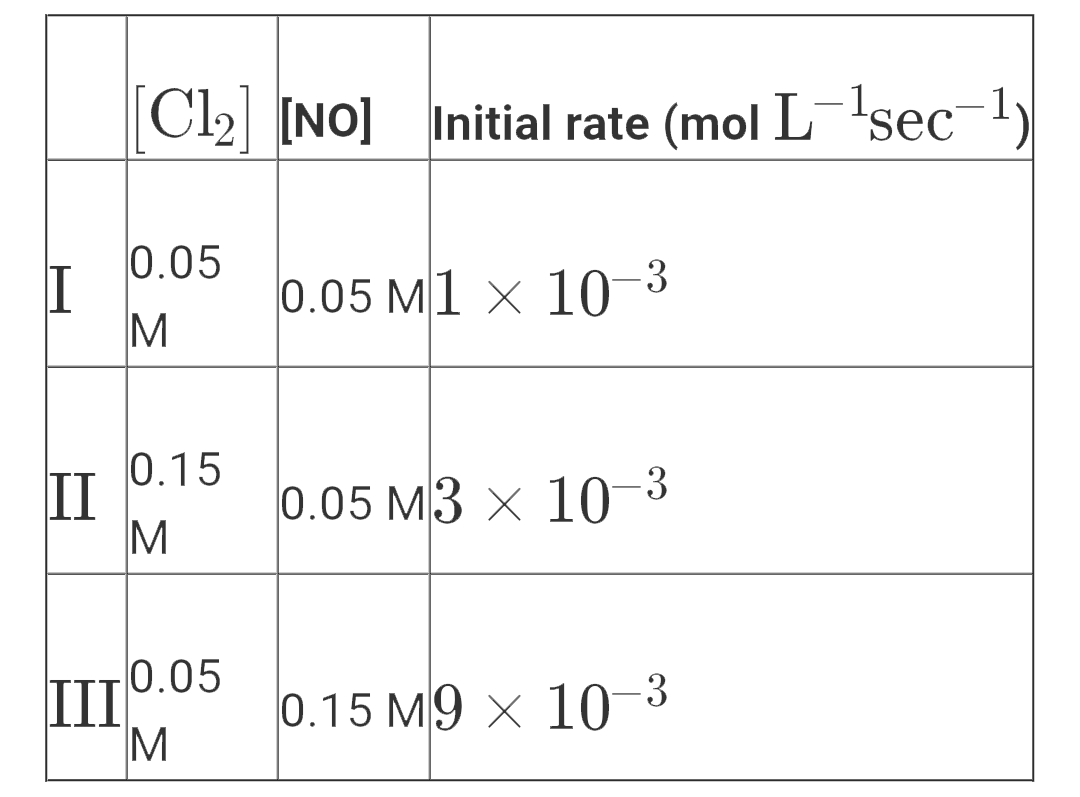The rate law for the chemical reaction 2NO2Cl→2NO2+Cl2+Cl2=k[NO2Cl] is rate The rate determining step is
2NO2Cl→2NO2+2Cl
NO2+Cl2→NO2Cl+Cl
NO2Cl+Cl→NO2+Cl2
NO2Cl→NO2+Cl
The correct Answer is:D
To solve the problem, we need to analyze the given reaction and determine the rate-determining step (RDS) based on the provided rate law.
1. Identify the Reaction: The reaction given is:
2NO2Cl→2NO2+Cl2
However, there is an extra Cl2 mentioned in the question. The correct interpretation is:
2NO2Cl→2NO2+Cl2
2. Write the Rate Law: The rate law given is:
Rate=k(NO2Cl)
This indicates that the rate of the reaction depends on the concentration of NO2Cl.
3. Understanding the Rate Determining Step: The rate determining step (RDS) is the slowest step in a reaction mechanism that dictates the overall rate of the reaction. The rate law reflects the stoichiometry of the RDS.
4. Analyzing the Stoichiometry: The stoichiometric coefficient for NO2Cl in the reaction is 2, but the rate law suggests that the reaction behaves as if it is first order with respect to NO2Cl. This implies that the RDS must involve one molecule of NO2Cl.
5. Proposing the Rate Determining Step: To satisfy the rate law, we can propose that the RDS is:
NO2Cl→NO2+Cl
This step involves one NO2Cl molecule, which aligns with the rate law indicating first-order dependence.
6. Selecting the Correct Option: Among the provided options, we need to find one that matches the proposed RDS:
- The correct option is:
NO2Cl→NO2+Cl
Conclusion:
The rate-determining step (RDS) for the reaction is:
NO2Cl→NO2+Cl
2NO2Cl→2NO2+Cl2
However, there is an extra Cl2 mentioned in the question. The correct interpretation is:
2NO2Cl→2NO2+Cl2
Rate=k(NO2Cl)
This indicates that the rate of the reaction depends on the concentration of NO2Cl.
NO2Cl→NO2+Cl
This step involves one NO2Cl molecule, which aligns with the rate law indicating first-order dependence.
- The correct option is:
NO2Cl→NO2+Cl
The rate-determining step (RDS) for the reaction is:
NO2Cl→NO2+Cl
Similar Questions
Balance the chemical equations :
Cl2+SO2+H2O→H2SO4+HCl
View SolutionAt 193∘C , the rate law for the reaction 2Cl2O→2Cl2+O2 is rate =k[Cl2O]2 .
(a) How the rate changes if [Cl2O] is raised to threefold of the original ?
(b) How should [Cl2O] be changed in order to order to double the rate ?
View SolutionFor the reaction, 2Cl(g)→Cl2(g), the correct option is:
View SolutionThe rate of the reaction
2NO+Cl2→2NOCl
is given by the rate equation
Rate=k[NO]2[Cl2]
The value of the rate constant can be increased by
View SolutionThe given data are for the reaction, 2NO(g)+Cl(g)→2NOCl(g) at 298K

The rate law of the reactions is
View SolutionExpress the rate of following reactions
PCl5→PCl3+Cl2
View SolutionExpress the rate of following reactions
PCl5→PCl3+Cl2
View SolutionExpress the rate of following reactions
PCl5→PCl3+Cl2
View SolutionExpress the rate of the following reactions:
(a) PCl5→PCl3+Cl2
(b) 2NO2→2NO+O2
in terms of the concentrations of reactants and Products.
View SolutionThe form of rate law for a reaction is expressed as, rate = k[Cl2][NO]2
Find out the order of the reaction with respect to Cl2, with respect to NO and also the overall order of the reaction.
View Solution
